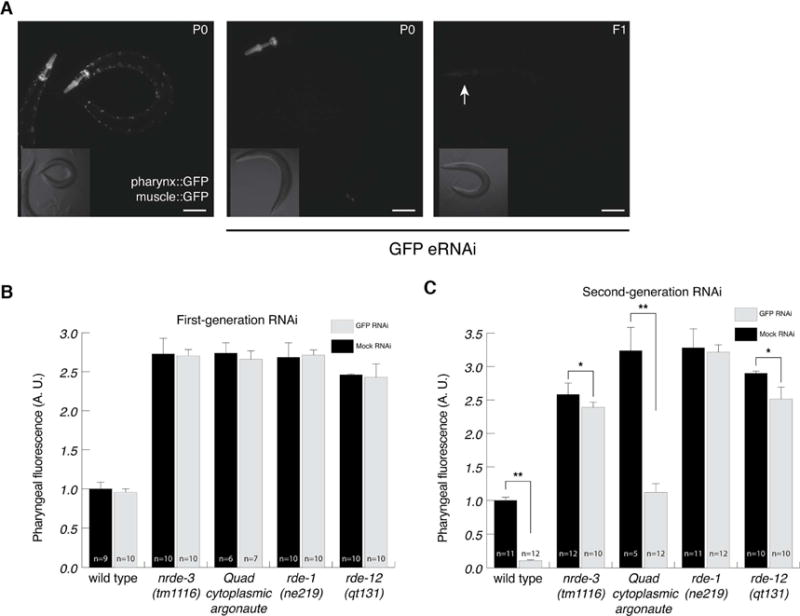Figure 1.

Pharyngeal muscle cells are sensitive to second-generation RNAi and require nuclear RNAi. (A) The pharyngeal muscle is defective for first-generation RNAi, but competent for second-generation RNAi. Representative photos of worms not exposed to dsRNA (left), an adult grown on GFP RNAi from hatching (first-generation RNAi, middle), and the F1 progeny of worms grown on GFP RNAi (second-generation RNAi, right). Scale bars represent 10 μm. (B and C) Quantified fluorescence intensity of pharyngeal muscle following first-generation (B) or second-generation (C) feeding RNAi. Wild type on mock RNAi is defined as 1 arbitrary unit (A. U.). Error bars show standard deviation, n= number of animals scored (*p<.05, ** p<.01).
